Havana Travel Guide
Situated on the north coast of the island and built around a natural harbour, Havana is one of the most lively and colourful cities in the Caribbean. Much of the city's charm can be found among the narrow, derelict streets packed with old buildings and fascinating characters. Every open door and overhanging balcony provides glimpses of rocking chairs and colourful washing, accompanied by strains of music.
Old Havana (Habana Vieja) is a UNESCO World Heritage Site and a major tourist destination. The Spanish left behind some exquisite colonial architecture, and many of the great buildings and grand plazas are being restored to their former glory, although ironically the general dilapidation of the great buildings of Havana contributes enormously to their charm.
Central Havana (Centro Habana) has some of the most important museums and architectural highlights of the city, including the Revolution Museum and the National Capitol, which resembles the US Capitol Building in Washington DC. The trendy suburb of Vedado boasts high-rise buildings and draws both locals and tourists with its theatres, art galleries, restaurants, cafes and cabaret shows. The five-mile (8km) pier, or malecon, stretches from Vedado to Habana Vieja, and is lined with architectural gems in various states of disrepair or restoration.
Havana's nightlife has the potential to challenge even the most seasoned partygoer. After dark, clubs and bars come alive and the famous rum cocktails flow freely. Travellers looking for a break from the revelry will find lovely beaches only twenty minutes east of the city.
Things to do in Havana
Havana's varied architecture is its best feature, and sightseers will encounter a fascinating history that speaks through everything from museums and churches to colonial forts and elaborate city squares. With its friendly residents juxtaposed by elegantly dilapidated buildings and occasionally derelict streets, there's nothing quite like Cuba's capital.
Just breathing in the scents and watching the vintage cars roll down the streets make for a great day out. However, heading into the historic old town of La Habana Vieja is a must, with the UNESCO World Heritage Site and its magnificent colonial buildings ripe for exploration. Tourists can take in the sights and sounds as they stroll down the Calle Obispo, a pedestrian boulevard that meanders through the streets, past the Parque Central and to some of the more hidden gems of Old Havana. The best view of the city is from the Camera Obscura, which provides a 360-degree look from atop the Plaza Vieja, while travellers are encouraged to take a stroll along the pretty pier.
It's worth visiting the cigar factories and rum distilleries to sample some world-famous Cuban exports, and to stroll through the Plaza de la Revolucion to imagine the historic speeches of political figures such as Fidel Castro and Che Guevara. The Museo de la Revolucion is also a major stop for history buffs. Fans of Ernest Hemingway can visit the museum dedicated to him on the outskirts of town. Set in his lovely old residence, it's where he wrote a few of his best books.
Havana is special for visitors simply because it feels so authentic, with a distinct character and little of the tacky tourist developments that overrun many other Caribbean destinations. After a long day of sightseeing in the city, travellers can head to the nearby beaches, most of which are located no more than 20 minutes away, to soak up some Caribbean sun and sip on a rum cocktail.
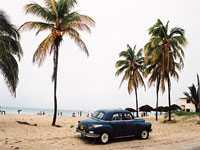
Playas del Este
Twenty-five minutes east of Havana are the Playas del Este, a chain of sandy beaches stretching for six miles (10km) between Bacuranao and Guanabo. There are a few tourist hotels lining the coast but facilities are fairly limited for the most part, with most visitors primarily there to enjoy its clear and warm turquoise waters. There are a number of pristine 'tourist' beaches in Cuba but the Playas del Este are fun because they offer a more genuine experience of the festive Cuban lifestyle, making it a great place to mix with locals. There are usually lots of vendors selling food and beer at reasonable prices on these beaches and people are generally outgoing and friendly.
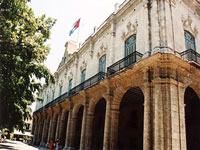
Museo de la Ciudad (Museum of the City)
The grand Baroque residence of Cuba's former colonial governors, the Palacio de los Capitanes Generales, was built in 1791 and now houses Havana's primary museum collection. Known as the Museum of the City, its exhibits tell tales of Havana, such as its founding and its wars for national independence. The colourful Hall of Flags contains the original Cuban flag, as well as a number of others used by the Spanish colonial government. There are also exhibits relating to archaeology, folklore and weaponry, and an art collection of porcelain, paintings and antique furniture.
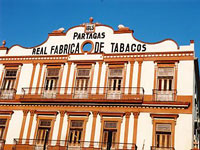
Cigar Factories
The art of cigar-making in Cuba is a source of national pride. The main factories in Havana offer tours that showcase how cigars are still rolled by hand. Visitors will discover how the oldest factory called Partagas, founded in 1827, still employs a reader to keep workers entertained, supporting theories as to why many of its famous cigars are named after literary characters. Havana's other cigar factories are La Corona and the lesser-visited Romeo y Julieta. Los Cohiba Esplendidos are supposed to be the best cigars in Cuba, formerly only available to Fidel Castro, but travellers are advised never to buy cigars from street vendors as they're usually fake.
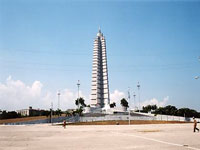
Plaza de la Revolución
The Plaza de la Revolucion is a famous landmark in Havana. The gigantic square, which is dominated by the imposing José Martí Memorial, has provided the setting for numerous political rallies. The podium in front of the memorial is where important political figures such as Fidel Castro have addressed more than a million Cubans on important occasions, such as 1 May and 26 July each year. At the foot of the memorial is a museum dedicated to Martí, a national hero of the Second War of Independence in 1895. On the far side of the square is the much-photographed Che Guevara mural with the slogan Hasta la Victoria Siempre (Forever Onwards Towards Victory).
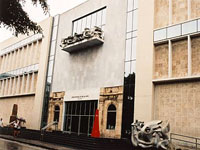
Museo Nacional de Bellas Artes
The Bellas Artes Museum was founded in 1913 and is split into two buildings, one housing international art and the other Cuban art. Both collections should delight any visitor who has an interest in art. The Colección de Arte Universal covers everything from ancient Greek artefacts and Latin American pieces to art by French, Dutch and Italian painters, while the Colección de Arte Cubano contains works from the 16th to the 20th centuries by prominent Cuban artists.
The latter galleries have rooms dedicated to religion, landscape, portraits and scenes from everyday Cuban life. Artwork by Gainsborough, Goya and Rubens are all featured, while the contemporary section includes Gitana Tropical by Victor Manuel Garcia and El Rapto de las Mulatas by Carlos Enriquez.
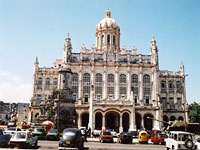
Museo de la Revolución
Formerly the Presidential Palace and headquarters of the Cuban government, this impressive building now houses documents, photographs and artefacts pertaining to the Cuban Revolution. The museum provides an excellent introduction to Cuba's struggle for independence, such as the striking displays of blood-stained and bullet-riddled uniforms, and exhibits of life under Spanish colonisation.
In front of the museum entrance stands a watchtower that was part of the old city walls, as well as a tank used by Fidel Castro during the Invasion of the Bay of Pigs in 1961. Behind the museum is the glass-encased yacht, the 'Granma', which brought 82 revolutionaries, including Che Guevara and Fidel Castro, from Mexico to set the wheel of revolution in motion.
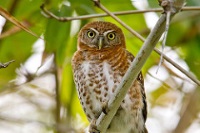
Montemar Natural Park
Cuba is developing its ecotourism and one of the prime spots for getting back to nature is the Montemar Natural Park. The vast peninsula is home to one of the largest swamps in the Caribbean, as well as forests, crystal-clear lagoons and canals. Its exuberant flora, including more than 900 species of plants, is complemented by its rich fauna, consisting of 160 bird species and many other animals, even crocodiles. One of the park's many interesting features is the Laguna del Tesoro (Treasure Lagoon), a fresh water reservoir inhabited by golden trout. There are nature trails, a bird-watching centre and the largest flooded cave in Cuba, as well as a scuba centre, crocodile farm and several restaurants.
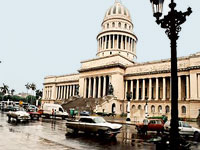
Capitolio Nacional
One of Havana's grandest pieces of architecture, the Capitolio is an important landmark and one of Centro Habana's major sights. A monumental stone stairway leads to the vast domed hall, from where tours will take visitors to elaborately decorated chambers that once housed the seat of Cuban Congress. Today it's home to the National Library and Academy of Sciences, a planetarium and a museum.
Directly beneath the dome lies an imitation 24-carat diamond set into the marble floor, from where all highway distances between Havana and all sites in Cuba are measured. The building is today a bit rundown and the inside is often closed for renovations. Even so, the outside is great for photo opportunities.
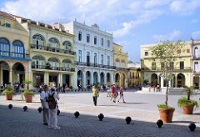
Habana Vieja (Old Havana)
Old Havana (Habana Vieja) is the historic section of Cuba's capital, its ruined defensive walls still attempting to fence in the district. During the years of Prohibition in the United States, it turned into a playground for Americans flocking here for liquor, gambling and hedonism. One of the district's most famous bars is La Bodeguita del Medio, which was the favoured haunt of the legendary US writer Ernest Hemingway. It's cobble-stoned streets are now lined with museums, hotels and restaurants, while striking churches and restored colonial buildings with grand facades surround the picturesque plazas, hosting afternoon chess, domino games and salsa performances.
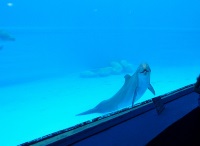
Acuario Nacional
Acuario Nacional is a scientific research centre dedicated to conservation and public education. It features around eight big tanks containing truly beautiful freshwater and saltwater fish, along with seals and other tropical species. Some of the biggest drawcards for kids are the reproduction of a mangrove forest and the marine grotto, while lunchtime is best experienced at the delightful underwater restaurant. The aquarium is consistently voted a top Havana tourist attraction for kids, so families shouldn't miss out.
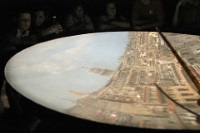
Camera Obscura
A camera obscura is a dark room in which a lens and a series of mirrors reflect images of exterior surroundings onto a concave surface. There is a Camera Obscura in Old Havana on the corner of Plaza Vieja, which offers spectacular 360-degree views over the city from a telescopic lens located atop a 115-foot (35m) tall tower. Guides give ten-minute tours of Old Havana and the bay, using the camera to point out special places, architectural highlights and the area's attractions. Apart from the camera tour, visitors also gain access to a roof garden, which is a nice spot from which to take photographs.
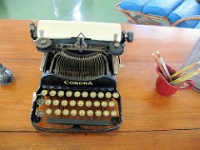
Ernest Hemingway Museum
Cubans have adopted the rambunctious writer Ernest Hemingway as their own, especially in Havana where you'll find memorials to his apartments, regular haunts and favourite beverages. A keen fisherman and keener drinker, Hemingway references can be seen all over the harbour and bars of Cuba. Finca Vigia, his home just outside Havana, has been restored and now functions as a museum. In it he wrote two of his most famous books, For Whom the Bell Tolls and The Old Man and the Sea, for which he was awarded the Nobel Prize for Literature. Visiting the house feels personal and intimate, where travellers can see his actual typewriter and library of over 8,000 books.
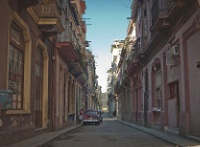
El Malécon
A five-mile (8km) esplanade, roadway and seawall, running between the harbour in Old Havana and the historically Russian area of Vedado, a stroll along El Malécon is the perfect way to start any Havana adventure. The two-hour walk, described by many as a cross-section of Cuban history, begins in Habana Vieja, where the buildings have had their famous pastel colours faded by the sun and the salty sea-wind, and continues past various monuments of struggle heroes such as Máximo Gomez and Calixto García, before ending up in Vedado, a funky downtown district with great sights and vibrant nightlife.
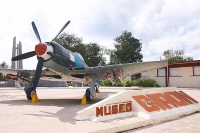
Bay of Pigs Museum
The famous Bay of Pigs Invasion of 1961 was a humiliating failure for the United States, strengthening the Cuban people's support for Fidel Castro and their own government. The fascinating Bay of Pigs Museum (Muséo Playa Gíron) stands as a record of the Cuban victory, with displays showing actual plane wreckages, tanks, mortars and machine guns used in the battle, and maps and explanations concerning this most infamous event. Anyone with even a passing interest in modern history or foreign policy that has shaped our current world will find the Bay of Pigs Museum utterly enthralling.
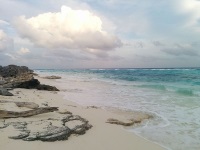
Cayo Largo Del Sur
Cayo Largo del Sur is a popular diving and snorkelling paradise southeast of Havana that boasts white sand and crystal-clear water. Explorers love to swim in its natural grottos, while marvelling at the wonderful variety of crustaceans and fish that call the coral reef home. This Cuban resort island is reached via yacht or plane from Havana, and once ashore travellers can rent motorcycles, bicycles, horses and watersports equipment. For those who want to sunbathe in their birthday suits, nudity is permitted on many of the island's beaches.
Varadero
The 22 mile (36km) stretch of Varadero Beach has often been referred to as one of the world's most beautiful. Crystal-clear water makes for amazing diving, fishing and snorkelling, and glass-bottom boat trips are unmissable. Varadero is situated on a spit of land reaching out into the Atlantic, boasting 23 world-renowned dive spots and dive centres providing lessons and equipment. Other attractions include deep sea fishing, windsurfing, parasailing, kayaking and sailing and, for landlubbers, there are a number of restaurants, nightclubs, a skydiving centre, golf courses and more. The hotels in Cuba's most popular beach resort are some of the best in the Caribbean, enjoying close proximity to shopping complexes and artisanal markets.
Things to do with kids in Havana
There are many fun places for children in Havana, both educational and recreational. The Acuario Nacional has dolphin and seal shows, while the Camera Obscura will give them a great look at the city through its telescopic lens. The Isla del Coco amusement park, located in Playa, is the largest in Havana and good fun for the whole family.
There are a few parks in Old Havana with play areas for children. Some have entry fees, but these are usually in Cuban Pesos and amount to a few cents. Lenin Park is enormous and has everything from swimming pools and horseback riding to a zoo and an amusement park. Parque La Maestranza in Old Havana is less extensive, but has play areas, pony rides and a train ride.
There are also plenty of stunning wilderness areas close to Havana, such as the Montemar Natural Park, which make for good family excursions and day trips. Kids seem to particularly love the crocodile farm at Montemar.
Havana is a colourful, laid-back and friendly city, which makes it a good destination for families travelling with kids. Just walking around the bustling streets and strolling along the promenade make for fun family days out. And, of course, the beaches will delight everyone.

Montemar Natural Park
Cuba is developing its ecotourism and one of the prime spots for getting back to nature is the Montemar Natural Park. The vast peninsula is home to one of the largest swamps in the Caribbean, as well as forests, crystal-clear lagoons and canals. Its exuberant flora, including more than 900 species of plants, is complemented by its rich fauna, consisting of 160 bird species and many other animals, even crocodiles. One of the park's many interesting features is the Laguna del Tesoro (Treasure Lagoon), a fresh water reservoir inhabited by golden trout. There are nature trails, a bird-watching centre and the largest flooded cave in Cuba, as well as a scuba centre, crocodile farm and several restaurants.

Acuario Nacional
Acuario Nacional is a scientific research centre dedicated to conservation and public education. It features around eight big tanks containing truly beautiful freshwater and saltwater fish, along with seals and other tropical species. Some of the biggest drawcards for kids are the reproduction of a mangrove forest and the marine grotto, while lunchtime is best experienced at the delightful underwater restaurant. The aquarium is consistently voted a top Havana tourist attraction for kids, so families shouldn't miss out.

Camera Obscura
A camera obscura is a dark room in which a lens and a series of mirrors reflect images of exterior surroundings onto a concave surface. There is a Camera Obscura in Old Havana on the corner of Plaza Vieja, which offers spectacular 360-degree views over the city from a telescopic lens located atop a 115-foot (35m) tall tower. Guides give ten-minute tours of Old Havana and the bay, using the camera to point out special places, architectural highlights and the area's attractions. Apart from the camera tour, visitors also gain access to a roof garden, which is a nice spot from which to take photographs.
Nightlife
The nightlife scene in Havana pulses with Latin rhythms, sultry dancing and timbale drum beats. Live music is highly popular in Havana, and visitors can enjoy the unique experience of partying it up to jazz, samba and salsa in local clubs and bars, although there are also some more conventional clubs with the standard DJ on the decks.
In general, Cubans love to look chic and stylish so tourists shouldn't be afraid to dress up when hitting the streets for a night on the town. Travellers should head to La Bodeguita del Medio in Old Havana, which is very touristy but a great place to get warmed up to the local flavour, before hitting nearby clubs where local musicians jam, while rum keeps spirits high.
El Chevere, in Parque Almendares, is a gigantic open-air club that keeps the music going all night long with pop, hip-hop and salsa beats, while the Havana Café in the Hotel Melía Cohiba in Paseo is the place to see and be seen. For memorable performances, venues such as La Tropical in Playa feature live bands, while Jazz Cafe and Jazz Club La Zorra y el Cuervo in Vedado are two of Havana's top live jazz venues. Clubs don't get busy until after 10pm, and often stay open all night long.
Havana has a thriving arts community, with internationally renowned groups such as the Cuban National Ballet performing in the Gran Teatro de La Habana or the national symphony orchestra in the Teatro Amadeo Roldan. The Sabado de la Rumba occurs every Saturday afternoon at El Gran Palenque, and is a charismatic mix of secular and Afro-Cuban religious dancing and drumming. Although locals are generally friendly and welcoming, crime is a problem and travellers should exercise caution getting around at night and be on the alert for scams.
Getting Around
Cubans rely heavily on an unreliable bus system that is cheap but overcrowded and slow, with long queues and inconsistent routes and schedules. The new modern city buses travel to anywhere in the city. Most visitors to Havana avoid the buses and rely instead on the numerous, inexpensive taxis to get around the greater part of the city.
Renting a car is not the best option as car hire is expensive, road signs are poor and numerous one-way streets make driving a real challenge. Different types of taxis cruise the streets, including tourist taxis, two-seater bicycle taxis and the iconic and not totally safe yellow scooter coconut taxis. Most tourist taxis are air conditioned, metered, well maintained and charge in convertible pesos.
There are also vintage car owners who operate as unofficial taxis, although a rate should be negotiated beforehand as passengers are likely to be overcharged. A couple of vintage cars can be hired by tourists for tours around the city too, and can be found outside main tourist attractions such as the Revolution Museum or the Capitolio. It is not generally difficult or expensive to get around in Havana, and it is a wonderful walking city when it comes to shorter distances.
Havana Climate and Weather
The Cuban climate is tropical and temperate with cool trade winds to provide relief from the heat and humidity. Havana's weather is typical for Cuba; it is generally sunny and hot year round apart from when it is stormy, which is why it is considered a year-round tourist destination. There is not much variation between day and night temperatures along the coast, and average sea temperatures are 77F (25C). The rainy season, from May to October, is also the hurricane season, but most hurricanes strike between August and October, while the wettest months in Havana are May and June. Hurricanes are usually more of a problem on the south coast of Cuba and Havana is typically safe from the worst of the tropical storms. Summer temperatures average around 81F (27C) with humidity at about 80 percent. Temperatures of about 68F (20C) are normal in winter. The temperature very seldom drops below 50F (10C) in Havana. The most popular time to visit Havana is in the winter months of December and January but, although avoiding the hurricane season is probably wise, Havana's weather is pleasant for travellers all year.
Cuba travel info
Electricity
Most older hotels use 110 volt power, 60Hz, while newer hotels use 220 volts, 60Hz. A variety of outlets are in use, but the flat and round two-pin plugs are most common.
Language
The official language is Spanish, but English is spoken in the main tourist spots.
Money
The official currency is the Cuban Peso (CUP), which divided into 100 centavos. The Peso Convertible (CUC) functioned as a 'tourist' currency but was removed from circulation in January 2021 as part of the Cuban government's currency reform. The Cuban National Peso is the only legal cash currency in Cuba, though private hotels, bars and restaurants usually accept cash payments in dollars or euros. Sterling is not widely accepted.
Visa and MasterCard are generally accepted only in major cities and hotels as long as they haven't been issued by a US bank; Diners Club has limited acceptance, and American Express is not accepted anywhere on the island. No US-issued credit or debit cards will work in ATMs, but those holding cards issued in other countries should be able to get pesos at most major tourist destinations.
Tipping
A 10 percent tip is appreciated in restaurants and by taxi drivers.
Health
Mosquito repellant is useful as chikungunya and dengue fever do occasionally break out, even in urban areas such as Havana, and visitors are advised to take precautions against typhoid, particularly if travelling to rural areas. Medical facilities in Havana are better than elsewhere in Cuba, but visitors may need to be medically evacuated if they need specialist care. Those requiring regular prescription drugs should bring them, along with a copy of the prescription and a doctor's letter to facilitate entry through customs. Travel insurance with provision for emergency repatriation is compulsory for visitors to Cuba.
Safety
Cuba is considered comparatively free from the threat of global terrorism, but visitors are advised to be vigilant regarding crime. Theft from baggage in airports is common, and valuables should not be packed in suitcases; travellers should be wary of pickpockets and bag snatchers in Old Havana, at major tourist sites and on buses and trains. Visitors are advised to take taxis after dark rather than walk but should always make sure taxis are registered.
If there are political demonstrations of any kind, travellers should avoid them, as Cuban authorities are known to clamp down on street protests quickly and sometimes violently. Tropical storms and hurricanes usually occur between June and November. Although good warning is usually given, electricity, water and communications can be disrupted for weeks.
Local customs
Visitors should address Cuban men as 'senor' and women as 'senora'. While many Cubans will engage in political discussion and debate, it is not advisable to criticise the government too vocally and it's best to be respectful of revolutionary figures such as Fidel Castro and Che Guevara.
Homosexuality is legal in Cuba but public displays of affection between same-sex couples are not always well received by locals. The penalties for possession of illegal drugs are very strict, as are the penalties for any breach of Cuban immigration rules.
Doing business
Cubans tend to be warm and hospitable, and business is conducted more informally than in many other countries. Establishing a good relationship is vital to successful business and some time may be given over to small talk. Owing to relative isolation from the global economy, business in Cuba tends to take some time and effort, and one is often hemmed in by the country's communist practices.
Punctuality is always important, but foreigners shouldn't expect meetings to begin on time or deals to be struck quickly. The dress code tends to be more casual than elsewhere, but businesspeople still usually wear collared shirts and the dress code for women is sophisticated. Business hours are usually about 8.30am to 12.30pm and 1.30pm to 4.30pm, Monday to Friday. Some businesses are open every second Saturday.
Duty free
Travellers to Cuba who are over 18 years do not need to pay customs duty on 400 cigarettes or 50 cigars or 500g of tobacco; 3 bottles of alcoholic beverages; medicines and perfume for personal use; and gifts to the value of CUP 1,000.
Communications
The international code for Cuba is +53. WiFi availability in Cuba is expanding rapidly and hotels will often provide access, but there is still limited connectivity. A prepaid NAUTA internet card is needed and is purchasable from a ETECSA station located throughout major cities or at upscale hotels. Once visitors have a NAUTA card they'll need to find a WiFi hotspot in a modern hotel or WiFi park.
Passport & Visa
In lieu of a visa, a Tourist Card ("Tarjeta del Turista") may be issued by tour operators, travel agents, or airlines for a single-entry holiday trip of up to 30 days, provided accommodation has been pre-booked and paid. A return ticket or proof of onward travel is required, as well as sufficient funds to cover the period of intended stay in Cuba (US$50 or equivalent per person, per day). All those entering Cuba must hold travel insurance, with coverage in Cuba, to ensure cover of medical expenses for the period of stay. It is highly recommended that travellers' passports have at least six months' validity remaining after the intended date of departure from their travel destination. Immigration officials often apply different rules to those stated by travel agents and official sources.
Entry requirements
US passports must have six months' validity at the time of entry, and a visa is required. Travel to Cuba for tourist activities remains prohibited by statute.
UK passports must have an 'expiry date' at least six months after the date visitors arrive and three months after their planned departure date. Visitors will need to get a tourist card, also known as a tourist visa, before they travel. The tourist card allows visitors to stay in Cuba for up to 90 days.
Canadian passports must be valid for the duration of stay. Canadian tourists will need a visa, known as tourist card. The tourist card allows them to stay in Cuba for up to 90 days.
Australian passports must be valid for six months beyond the date of departure. Those visiting for tourism can get a tourist card, which includes a tourist visa. The tourist card allows visitors to stay in Cuba for up to 90 days.
South African passports must be valid for six months beyond the date of departure. Those visiting for tourism can get a tourist card, which includes a tourist visa. The tourist card allows visitors to stay in Cuba for up to 90 days.
Irish passports must be valid for six months beyond the date of departure. Those visiting for tourism can get a tourist card, which includes a tourist visa. The tourist card allows visitors to stay in Cuba for up to 90 days.
New Zealand passports must be valid for six months beyond the date of departure. Those visiting for tourism can get a tourist card, which includes a tourist visa. The tourist card allows visitors to stay in Cuba for up to 90 days.
Useful contacts
Official Tourism Portal, Cuba: www.cubatravel.cu
106 (police), 104 (ambulance), 105 (fire department)


